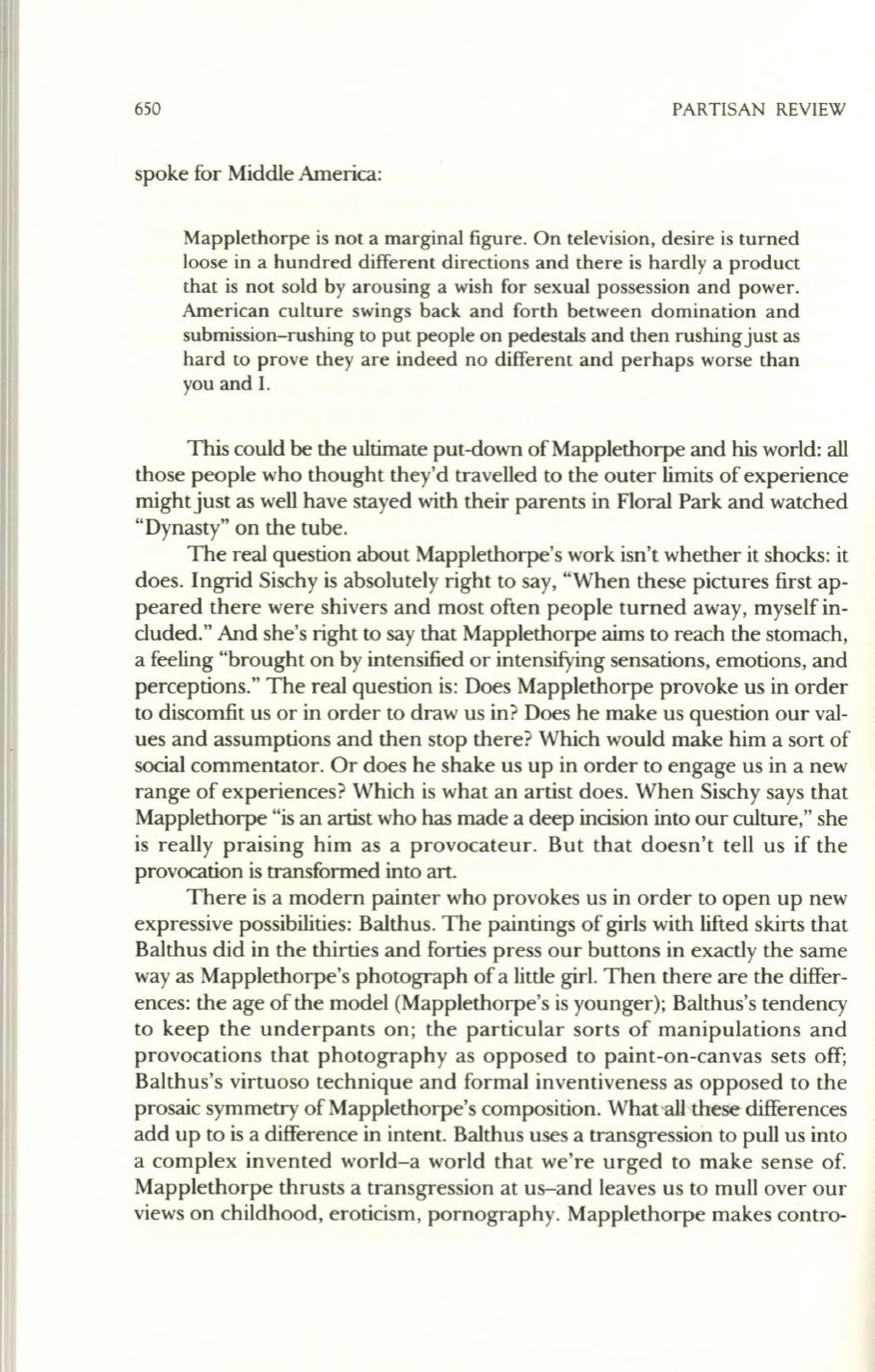
650
PARTISAN REVIEW
spoke for Middle America:
Mapplethorpe is not a marginal figure . On television, desire is turned
loose in a hundred different directions and there is hardly a product
that is not sold by arousing a wish for sexual possession and power.
American culture swings back and forth between domination and
submission-rushing to put people on pedestals and then rushing just as
hard to prove they are indeed no different and perhaps worse than
you and
l.
This could be the ultimate put-down ofMapplethorpe and his world:
all
those people who thought they'd travelled to the outer limits of experience
might just as well have stayed with their parents in Floral Park and watched
"Dynasty" on the tube.
The real question about Mapplethorpe's work isn't whether it shocks: it
does. Ingrid Sischy is absolutely right to say, "When these pictures first ap–
peared there were shivers and most often people turned away, myself in–
cluded." And she's right to say that Mapplethorpe aims to reach the stomach,
a feeling "brought on by intensified or intensifying sensations, emotions, and
perceptions." The real question is: Does Mapplethorpe provoke us in order
to discomfit us or in order to draw us in? Does he make us question our val–
ues and assumptions and then stop there? Which would make him a sort of
social commentator. Or does he shake us up in order to engage us in a new
range of experiences? Which is what an artist does. When Sischy says that
Mapplethorpe "is an artist who has made a deep incision into our culture," she
is really praising him as a provocateur. But that doesn't tell us if the
provocation is transformed into art.
There is a modern painter who provokes us in order to open up new
expressive possibilities: Balthus. The paintings of girls with lifted skirts that
Balthus did in the thirties and forties press our buttons in exactly the same
way as Mapplethorpe's photograph of a little girl. Then there are the differ–
ences: the age of the model (Mapplethorpe's is younger); Balthus's tendency
to keep the underpants on; the particular sorts of manipulations and
provocations that photography as opposed to paint-on-canvas sets off;
Balthus's virtuoso technique and formal inventiveness as opposed to the
prosaic symmetry ofMapplethorpe's composition. What-all these differences
add up to is a difference in intent. Balthus uses a transgression to pull us into
a complex invented world-a world that we're urged to make sense of.
Mapplethorpe thrusts a transgression at us-and leaves us to mull over our
views on childhood, eroticism, pornography. Mapplethorpe makes contro-


